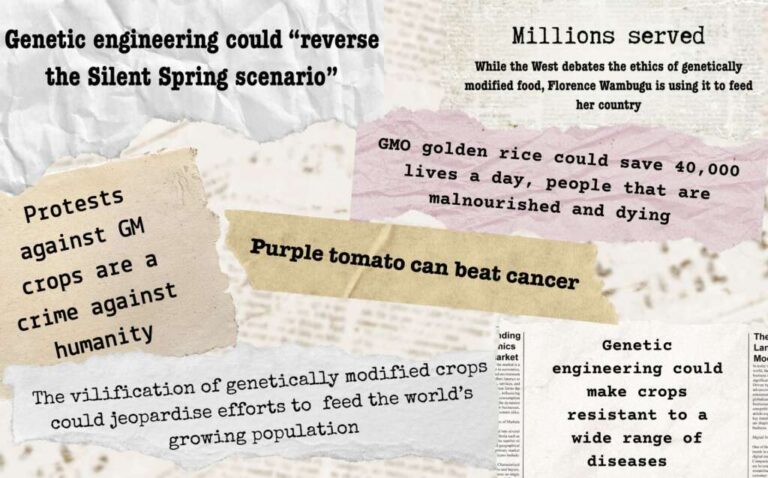Frequently Asked Questions on the Federal Insecticide, Fungicide, and Rodenticide Act (FIFRA):
Federal Administrative Rules vs. State-Level Constitutional Law on Harm
Introduction
The Federal Insecticide, Fungicide, and Rodenticide Act (FIFRA), enacted in 1947 and significantly amended in 1972, 1988, and 1996, is the primary law governing U.S. pesticide regulation, which is administered by the Environmental Protection Agency (EPA). FIFRA establishes a federal framework for registering, labeling, and enforcing pesticide use regulations meant to protect human health and the environment.[1]
However, its interaction with state-level constitutional law, particularly in addressing harm caused by pesticides, raises complex questions of federal preemption, state sovereignty, and individual rights.
Background
“Federal preemption” is the legal doctrine which prevents state laws that would conflict with existing federal laws from coming into effect. Federal preemption is rooted in the Supremacy Clause found in the U.S. Constitution, Article VI, which states that federal laws make up “the supreme law of the Land.”
Under the 10th Amendment of the Constitution, the federal government and state governments share power, and the federal government’s powers are limited. Any powers not delegated to the federal government by the Constitution are “reserved to the states, or to the people.”
Acts of Congress, like the FIFRA are federal law and become part of the United States Code, or U.S.C. and, once enacted, become the supreme law of the land. Once there is a federal law on the books, the states are disallowed from making laws that confound or contravene it, that is, the federal law preempts state law.
Federal Agencies, like the Environmental Protection Agency, operate under the Executive Branch. Agencies like the EPA make up the administrative state, which, while under the Executive Branch, also often have quasi-judicial and quasi-legislative functions, complicating executive authority over these agencies.
Federal Agencies in turn are responsible for federal rulemaking. These rules become the Consolidated Federal Rules, or CFR. The amount of authority granted federal agencies in rulemaking has recently come under scrutiny.
In 2024, the Supreme Court overturned Chevron doctrine in the landmark Loper Bright Enterprises v. Raimondo decision, raising new legal questions about federal rulemaking authority, and whether regulations promulgated by unelected bureaucrats preempt constitutional law.
This FAQ explores FIFRA’s administrative structure, its interplay with state constitutional law, and recent legal developments, emphasizing issues of harm and liability.
——————————————————–
1. What is FIFRA, and what are its core objectives?
Answer:
The Federal Insecticide, Fungicide, and Rodenticide Act (7 U.S.C. § 136 et seq.) is a federal statute that governs the registration, distribution, sale, and use of pesticides in the United States. Administered by the EPA,[1] FIFRA aims to protect applicators, consumers, and the environment by ensuring that pesticides are safe and effective when used according to their approved labels. Its core objectives include:
- Strengthening Registration: Requires manufacturers to demonstrate that pesticides meet safety and efficacy standards. Intended to shift the burden of proof to registrants, manufacturers provide studies (on an honor system) for administrators to review. [17]
- Enforcement: Prohibiting the sale or use of unregistered or banned pesticides and ensuring compliance with labeling requirements.
- Environmental and Health Protection: Assessing risks to humans, wildlife, and ecosystems, particularly through amendments like the Food Quality Protection Act (FQPA) of 1996, which emphasizes protections for infants, children, and sensitive populations.[1]
- Periodic Review: Mandating the EPA to reevaluate registered pesticides every 15 years to ensure compliance with contemporary safety standards.[17]
FIFRA operates under a cooperative federalism model, where states share enforcement responsibilities but are subject to federal oversight to ensure uniformity in pesticide regulation.
————————————————————
2. How does FIFRA’s federal administrative framework function?
Answer:
FIFRA’s administrative framework is rooted in the Administrative Procedures Act (APA), which governs federal agency rulemaking and adjudication. The EPA, as the primary administrator, exercises significant authority through:
- Rulemaking: The EPA promulgates regulations under FIFRA, published in the Code of Federal Regulations (CFR) (40 C.F.R. Parts 150–189), covering pesticide registration, labeling, and use restrictions. Rulemaking follows APA procedures, including notice-and-comment periods posted to the Federal Register, ensuring transparency and public participation.[2]
- Registration Process: Pesticides must be registered with the EPA, requiring extensive data on safety, efficacy, and environmental impact. The EPA evaluates risks versus benefits, with a “reasonable certainty of no harm” standard for food-use pesticides under the Federal Food, Drug, and Cosmetic Act (FFDCA).[9]
- Enforcement and Adjudication: The EPA monitors compliance through inspections, testing, and enforcement actions. Administrative law judges (ALJs) may adjudicate disputes, such as violations of labeling requirements, though recent Supreme Court decisions (e.g., SEC v. Jarkesy, 2024) have questioned the constitutionality of in-house adjudications.[8]
- Special Reviews: If new evidence suggests adverse effects, the EPA may conduct a special review to reassess a pesticide’s registration, potentially leading to amendments or cancellation. [17]
FIFRA’s framework is designed to balance Administrative regulations with Constitutional due process, but it faces scrutiny for delegating significant centralized rule-making authority to the EPA. As administrative agencies – which operate under the Executive branch – have expanded over the decades, cases such as Loper Bright have posed legal challenges to this centralized rule-making authority by arguing it violates the separation of powers and nondelegation doctrine of the constitution.[3]
———————————————————
3. How do state-level constitutional laws address harm from pesticides?
Answer:
State constitutional law intersects with pesticide regulation through provisions protecting individual rights, public health, and environmental integrity. Unlike FIFRA’s uniform federal regulations, state laws vary, but common principles include:
- Due Process: State constitutions, like the U.S. Constitution, guarantee due process under the Fifth and Fourteenth Amendments. Individuals harmed by pesticides (e.g., through exposure or environmental contamination) may seek remedies under state due process clauses, challenging government actions or inactions that fail to protect public health. (Constitutional Law vs. Administrative Law)
- Equal Protection: State equal protection clauses may be invoked if federal pesticide regulations discriminate against or disproportionately harm a specific demographic or class of individuals, such as agricultural workers or low-income populations near spraying sites. [5]
- Public Health and Welfare: Many state constitutions explicitly protect public health or environmental rights (e.g., California’s Constitution, Article I, § 1, recognizes the right to a clean environment). These provisions enable states to enact stricter pesticide regulations, provided they do not conflict with FIFRA.
- Tort Claims for Harm: State tortious claims law – grounded in each state’s constitution – may vary depending upon revised statutes passed by the state’s legislature, but generally allows individuals to sue for pesticide-related injuries (e.g., negligence, implied, or strict liability). However, FIFRA’s preemption clause (7 U.S.C. § 136v) limits state authority to impose labeling or packaging requirements that differ from federal rulemaking, complicating tort claims.[1]
States may also enact statutes or regulations under their police powers to address localized pesticide harms, such as California’s Proposition 65, which requires warnings for carcinogenic pesticides, or New York’s restrictions on certain pesticides for public health reasons. These efforts, however, must navigate FIFRA’s preemption constraints.[10]
———————————————————–
4. How does FIFRA’s preemption affect state constitutional law on harm?
Answer:
FIFRA’s preemption clause (7 U.S.C. § 136v) creates a tension between federal and state authority, particularly in addressing harm. The clause states that states “shall not impose or continue in effect any requirements for labeling or packaging in addition to or different from those required under [FIFRA].” This has significant implications:
- Express Preemption: In Bates v. Dow Agrosciences LLC (2005), the Supreme Court clarified that FIFRA preempts state laws that impose labeling requirements inconsistent with EPA-approved labels. However, states retain authority to regulate pesticide use, sale, or disposal, provided these regulations do not conflict with federal standards.[13]
- Implied Preemption: Beyond labeling, courts have grappled with whether FIFRA impliedly preempts state tort claims for harm. For example, failure-to-warn claims are often preempted if they challenge EPA-approved labels, but claims based on defective design or manufacturing may proceed under state law.[1]*
- State Police Powers: States may use their police powers to enact stricter use restrictions or bans on pesticides, as long as they do not infringe on federal labeling requirements. For instance, Hawaii banned chlorpyrifos in 2018, leveraging its constitutional authority to protect public health, despite EPA approval of the pesticide.
This preemption framework limits states’ ability to address harm through labeling-based remedies but preserves their role in enforcement and use regulation. Recent cases, such as Hardeman v. Monsanto Co. (2019), highlight ongoing debates over whether state tort claims for pesticide-related harm (e.g., cancer from glyphosate) are preempted by FIFRA, particularly when federal and state standards diverge.[14]
——————————————————
5. What are the constitutional tensions between FIFRA and state law?
Answer:
The interplay between FIFRA’s federal administrative rules and state constitutional law raises several constitutional issues:
- Supremacy Clause: The U.S. Constitution’s Supremacy Clause (Article VI, Clause 2) establishes that federal law, including FIFRA, preempts conflicting state laws. This limits state constitutional protections when they conflict with EPA regulations, as seen in Bates.[4]
- Tenth Amendment: States argue that their reserved powers under the Tenth Amendment allow them to regulate pesticides to protect public health and the environment. However, National League of Cities v. Usery (1976) and Garcia v. San Antonio Metropolitan Transit Authority (1985) would suggest that federal regulation under the Commerce Clause (Article I, Section 8) may override state sovereignty unless it directly impairs state functions.[12]
- Nondelegation Doctrine: Some scholars and jurists, including Justice Clarence Thomas, argue that FIFRA’s broad delegation of authority to the EPA raises separation-of-powers concerns[3], as Congress may not delegate excessive legislative power to agencies. The 2024 Loper Bright Enterprises v. Raimondo decision, which overturned Chevron deference, amplifies this critique by requiring courts to independently interpret statutes, potentially limiting the EPA’s regulatory flexibility under FIFRA.[7]
- Seventh Amendment: The SEC v. Jarkesy (2024) ruling, which held that agency adjudications imposing civil penalties violate the right to a jury trial, may impact FIFRA enforcement. If EPA administrative proceedings for pesticide violations are challenged, parties may demand federal court trials, complicating enforcement. [8]
These tensions reflect a broader debate over the balance between federal regulatory uniformity and state autonomy in addressing localized harms.
———————————————————–
6. How do recent Supreme Court decisions impact FIFRA’s administration and state responses to harm?
Answer:
Recent Supreme Court decisions have reshaped administrative law, with significant implications for FIFRA and state-level responses to pesticide harm:
- Loper Bright Enterprises v. Raimondo (2024): By overruling Chevron deference, the Court mandated that courts independently interpret ambiguous statutes, reducing deference to EPA interpretations of FIFRA. This may lead to increased judicial scrutiny of EPA pesticide registrations and risk assessments, potentially allowing states to challenge federal decisions that fail to address local harms.[2] [11]
- SEC v. Jarkesy (2024): This decision limits agencies’ ability to impose civil penalties through in-house adjudications, citing Seventh Amendment violations. For FIFRA, this could mean that EPA enforcement actions (e.g., fines for mislabeling) may require federal court proceedings, increasing costs and delays.[8]
- West Virginia v. EPA (2022): The major questions doctrine restricts agencies from issuing regulations with significant economic or political impact without clear congressional authorization. This could constrain EPA’s ability to enact broad pesticide bans or restrictions under FIFRA, potentially shifting regulatory authority to states or Congress.[3]
- Corner Post, Inc. v. Board of Governors (2024): By extending the statute of limitations for challenging agency rules, this decision allows new entities to contest long-standing EPA regulations under FIFRA, potentially destabilizing established pesticide approvals.[11]
These rulings collectively weaken the “administrative state,” empowering courts and, indirectly, states to challenge federal pesticide regulations. States may leverage their constitutional authority to enact stricter standards or pursue tort claims, though preemption remains a barrier.
———————————————————
7. How do federal and state frameworks address liability for pesticide-related harm?
Answer:
Liability for pesticide-related harm is addressed differently under FIFRA’s federal framework and state constitutional law:
Federal Framework (FIFRA):
- EPA Oversight: FIFRA requires the EPA to assess risks to human health and the environment during registration. If a pesticide causes harm (e.g., through misapplication or unforeseen effects), the EPA may initiate a special review or cancel registration.[1] [17]
However, FIFRA does not provide a private right of action for individuals to seek damages directly.
- Administrative Enforcement: The EPA can impose civil or criminal penalties for violations, such as selling unregistered pesticides. Recent decisions like Jarkesy may require such actions to move to federal courts, complicating enforcement.[8]
- FFDCA Integration: For food-use pesticides, the EPA sets tolerances under the Federal Food, Drug, and Cosmetic Act (FFDCA), ensuring “reasonable certainty of no harm.” Violations (e.g., excessive residues, or misapplication) trigger enforcement by the FDA or USDA, but target the applicator while private lawsuits still remain limited by preemption.[9]
State Framework:
- Tort Law: State tort law allows claims for pesticide-related injuries, such as negligence, strict liability, or failure-to-warn. However, Bates limits failure-to-warn claims if they conflict with EPA-approved labels.** Cases like Hardeman v. Monsanto demonstrate that juries may award significant damages for harm (e.g., cancer linked to glyphosate), though appeals often hinge on preemption.
- Constitutional Protections: State due process and equal protection clauses support claims against state agencies that fail to regulate pesticides adequately. For example, California’s Proposition 65 leverages state constitutional authority to require warnings for carcinogenic pesticides, supplementing FIFRA’s requirements.
- Local Regulations: States like California and Hawaii have enacted stricter pesticide use restrictions, justified under their police powers, to address localized harms (e.g., drift affecting farmworkers). These measures must avoid conflicting with FIFRA’s labeling rules.
The divergence between federal and state approaches creates uncertainty. States may pursue tort claims or stricter regulations to address harm, but federal preemption often narrows their scope, leading to ongoing litigation and policy debates.
———————————————–
8. What are recent developments in FIFRA-related litigation or policy?
Answer:
Recent developments highlight evolving tensions between FIFRA’s federal framework and state-level responses to pesticide harm:
- Glyphosate Litigation: Cases like Hardeman v. Monsanto (2019) and Pilliod v. Monsanto (2019) involved multi-billion-dollar jury verdicts for plaintiffs alleging that glyphosate (Roundup) caused non-Hodgkin’s lymphoma. These cases tested FIFRA’s preemption boundaries, with courts allowing state tort claims to proceed if not directly challenging EPA-approved labels. Appeals continue to refine the scope of preemption.
- Chlorpyrifos Bans: In 2021, the EPA revoked tolerances for chlorpyrifos on food crops,[15] citing risks to children’s health, following advocacy from states like California and New York. This decision reflects FIFRA’s FQPA requirements but faced industry pushback, illustrating federal-state tensions. On November 2, 2023, the Eighth Circuit issued a decision vacating EPA’s 2021 final rule and remanding the matter to EPA for further proceedings. The Eighth Circuit’s mandate issued on December 28, 2023, reinstated all chlorpyrifos tolerances. On February 5, 2024, EPA issued a notice in the Federal Register as a technical correction to the Code of Federal Regulations to reflect the Eighth Circuit’s reinstatement of chlorpyrifos tolerances.[16]
- Supreme Court Rulings: The 2024 decisions in Loper Bright, Jarkesy, and Corner Post have shifted power to courts, potentially increasing challenges to EPA pesticide regulations. For example, businesses may contest longstanding registrations, and states may gain leverage to push for stricter local standards.[7] [8]
- State Initiatives: States like California (Proposition 65) and Oregon have strengthened pesticide monitoring and restrictions, leveraging constitutional police powers. These efforts face legal challenges from industry groups citing FIFRA preemption, with outcomes pending in federal courts.[10]
These developments underscore the dynamic interplay between federal administrative authority and state constitutional protections, with courts increasingly mediating disputes over pesticide-related harm.
—————————————————
9. How can individuals or entities challenge FIFRA regulations or seek redress for harm?
Answer:
Challenging FIFRA regulations or seeking redress for pesticide-related harm involves multiple avenues:
- Administrative Challenges: Under the Administrative Procedures Act (APA), parties can challenge EPA regulations in federal court by arguing that the agency exceeded its authority, failed to follow rulemaking procedures, or violated constitutional rights. The Loper Bright decision enhances judicial scrutiny of such challenges.[6] [7]
- State Tort Claims: Individuals harmed by pesticides can file state tort claims (e.g., negligence, product liability), through failure-to-warn claims. Successful cases, like Hardeman, demonstrate that design or manufacturing defect claims may survive preemption. However, federal preemption could limit state law failure-to-warn claims if new legislation* is passed, or if the US Supreme Court** decides such claims are limited.
- Congressional Review: The Congressional Review Act (CRA) allows Congress to review and potentially invalidate EPA rules within 60 days of publication, though this requires bipartisan support and presidential approval.[6]
- Constitutional Challenges: Parties may challenge EPA actions on constitutional grounds,*** such as due process violations or excessive delegation, particularly in light of Jarkesy and Loper Bright. States may also assert Tenth Amendment claims to protect their constitutional authority.
The evolving judicial landscape, particularly post-Loper Bright, empowers courts to play a larger role in resolving these disputes, potentially amplifying state and individual challenges to federal pesticide regulations.
With Chevron doctrine overturned, it is now possible for the first time in 40 years to challenge EPA determinations in court, as administrative agencies no longer have judicial deference. In other words, courts are no longer required to take the EPA’s or any other federal agency’s rule as the final word on scientific debates, such as how much pesticide exposure is needed to cause harm.
———————————————————–
Conclusion
FIFRA represents a robust federal framework for pesticide regulation, balancing public health and environmental protection with industry interests. However, its preemption of state labeling requirements creates friction with state constitutional protections, particularly in addressing harm. Recent Supreme Court decisions have curtailed agency deference, opening new avenues for states and individuals to challenge EPA regulations or seek remedies through tort law. As litigation and policy debates continue, the interplay between federal administrative rules and state constitutional law will shape the future of pesticide regulation, with significant implications for public health, environmental justice, and federalism.
*Implied preemption is the current basis for various state-level legislative efforts that companies, such as Monsanto-Bayer, are lobbying to pass.
**Monsanto-Bayer has recently filed a petition with the Supreme Court of the United States (Monsanto Company v. Durnell) to request a review of failure-to-warn claims.
***Attorneys for litigant John Durnell (Durnell v. Monsanto Company) have also filed a petition with the Supreme Court of the United States, challenging EPA review and Monsanto’s federal preemption argument.
Citations:
- Federal Insecticide, Fungicide, and Rodenticide Act | EPA https://www.epa.gov/laws-regulations/summary-federal-insecticide-fungicide-and-rodenticide-act
- Administrative law | Wex | US Law | LII / Legal Information Institute https://www.law.cornell.edu/wex/administrative_law
- The Evolving Landscape of Administrative Law | Skadden https://www.skadden.com/insights/publications/2023/09/quarterly-insights/the-evolving-landscape-of-administrative-law
- Overview – Rule of Law | www.uscourts.gov https://www.uscourts.gov/educational-resources/educational-activities/overview-rule-law
- Administrative Law | saylordotorg.github.io https://saylordotorg.github.io/text_law-for-entrepreneurs/s08-administrative-law.html
- Challenging Regulatory Actions Affecting Your Legal Interests | Justia https://www.justia.com/administrative-law/challenging-regulatory-actions/
- A Brave New World: The Supreme Court Torpedoes the ‘Administrative State’ | Katten https://katten.com/a-brave-new-world-the-supreme-court-torpedoes-the-administrative-state
- Supreme Court deals ‘earth-shattering’ blow to federal agencies’ administrative powers | Government Executive https://www.govexec.com/management/2024/06/supreme-court-deals-earth-shattering-blow-federal-agencies-administrative-powers/397697/
- Pesticide Law: A Summary of the Statutes | EveryCRSReport.com https://www.everycrsreport.com/reports/RL31921.html
- Proposition 65: Office of Environmental Health Hazard Assessment | oehha.ca.gov https://oehha.ca.gov/proposition-65
- Supreme Court Decision Limiting the Authority of Federal Agencies | KFF https://www.kff.org/private-insurance/issue-brief/supreme-court-decision-limiting-the-authority-of-federal-agencies-could-have-far-reaching-impacts-for-health-policy/
- Federal Regulations Affecting State Activities and Instrumentalities | Justia https://law.justia.com/constitution/us/amendment-10/04-federal-regulations.html
- Bates v. Dow Agrosciences LLC (2005) https://supreme.justia.com/cases/federal/us/544/431/
- Hardeman v. Monsanto Co. (2019)
https://law.justia.com/cases/federal/appellate-courts/ca9/19-16636/19-16636-2021-05-14.html
- FAQ: Current Status of Chlorpyrifos and Anticipated Path Forward | EPA https://www.epa.gov/ingredients-used-pesticide-products/frequently-asked-questions-about-current-status-chlorpyrifos
- Chlorpyrifos; Reinstatement of Tolerances | Federal Register https://www.federalregister.gov/documents/2024/02/05/2024-02153/chlorpyrifos-reinstatement-of-tolerances
Part 164: FIFRA | Subchapter E CFR Title 40 https://www.ecfr.gov/current/title-40/chapter-I/subchapter-E/part-164








